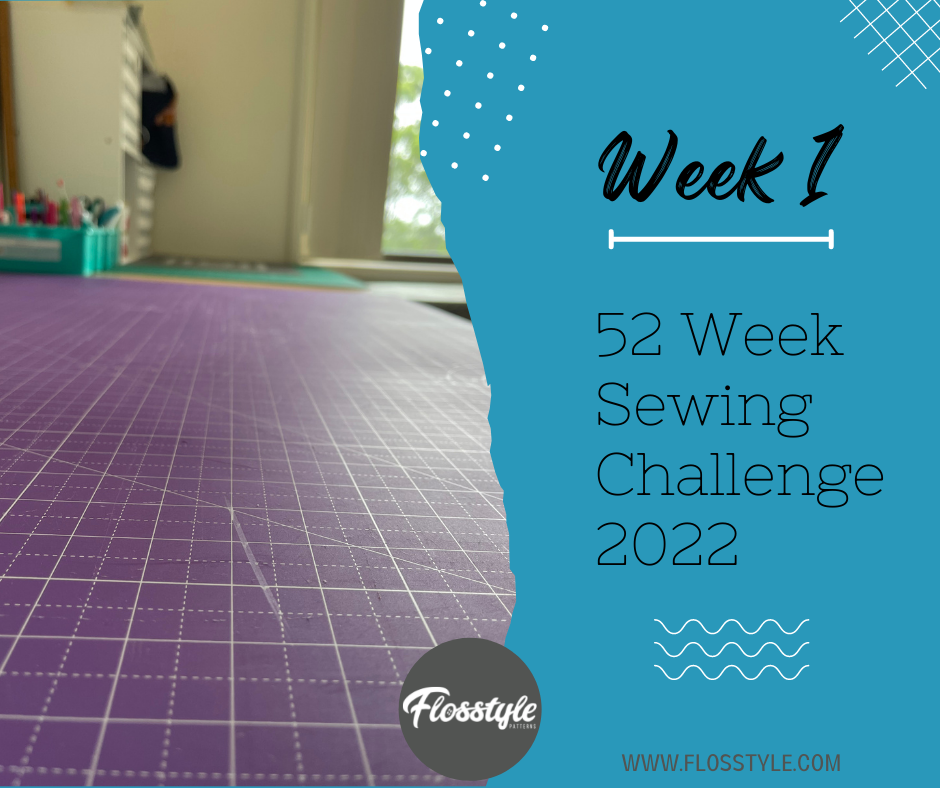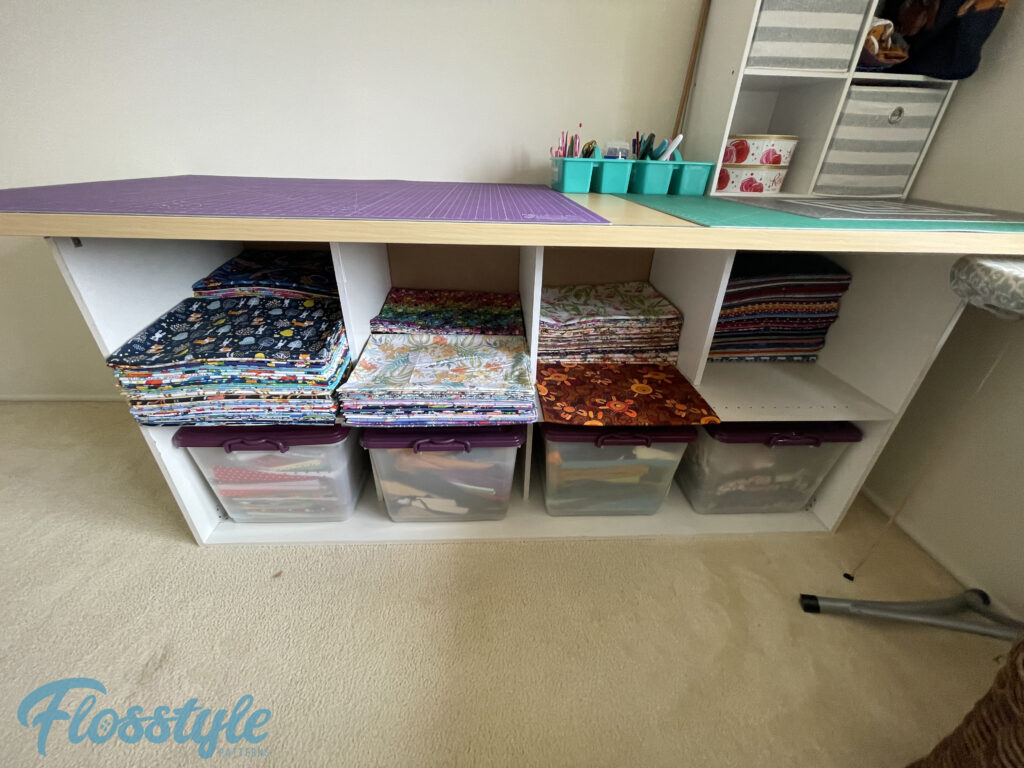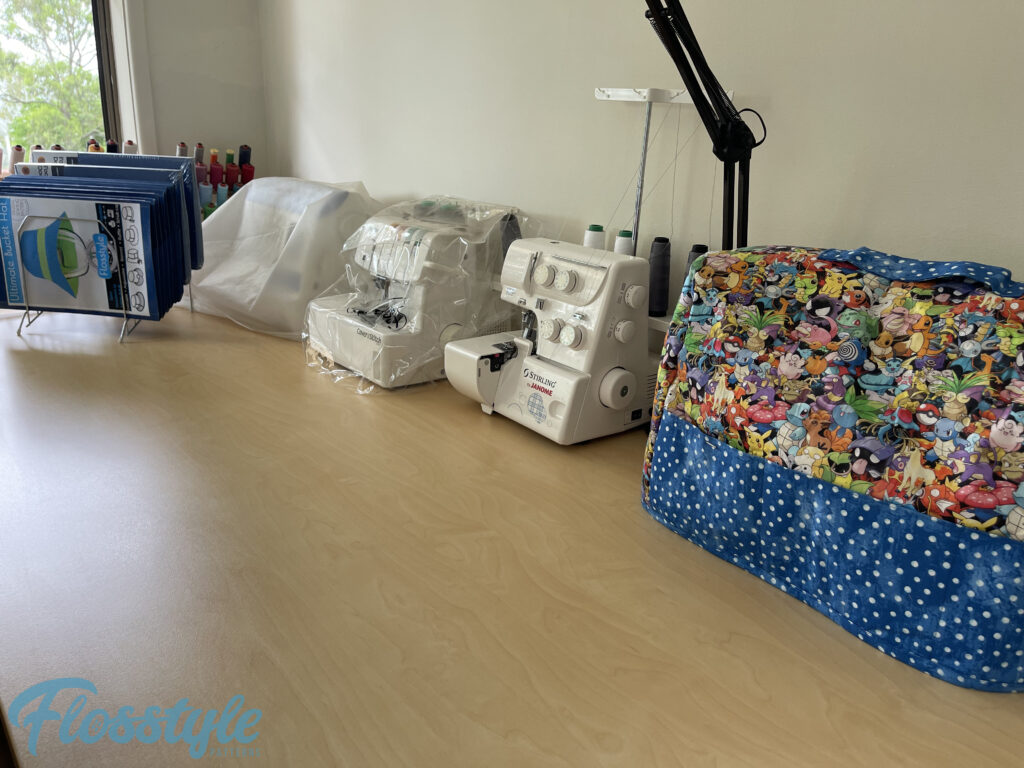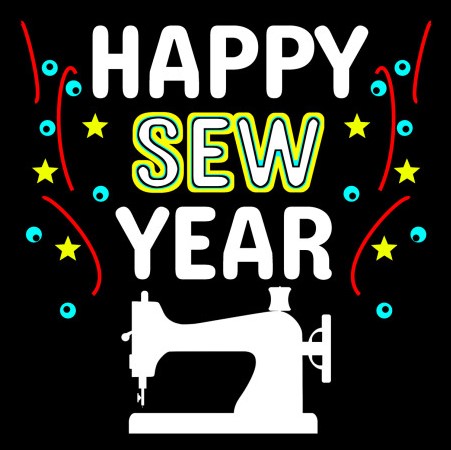This weeks challenge: Sewing Space
Accepted/Rejected: Accepted

What a perfect challenge to start off the new year with, I struggle to sew when my sewing space isn’t clean but I’d rather be sewing than cleaning so it often ends up pretty messy before I finally get around to tidying up.
I have just moved my sewing room to a new space and it wasn’t completely unpacked yet either so this challenge gave me the kick up the bum I needed to get it done. Refolding and putting away fabric was very distracting and I now have about 1000 project ideas swirling around in my head.

A new year seemed like the perfect time to start a TikTok too, there’s not much up there just yet but I had some fun this week trying to figure out how it all works and look forward to making more as I get some more sewing done. You can find the Flosstyle TikTok channel here.

Despite the beautiful clean space in the video and the photos, I have already managed to mess it up again but that means I have been sewing and after not getting a lot of sewing time in lately I’m okay with that.
Happy Sewing
xx Gail
